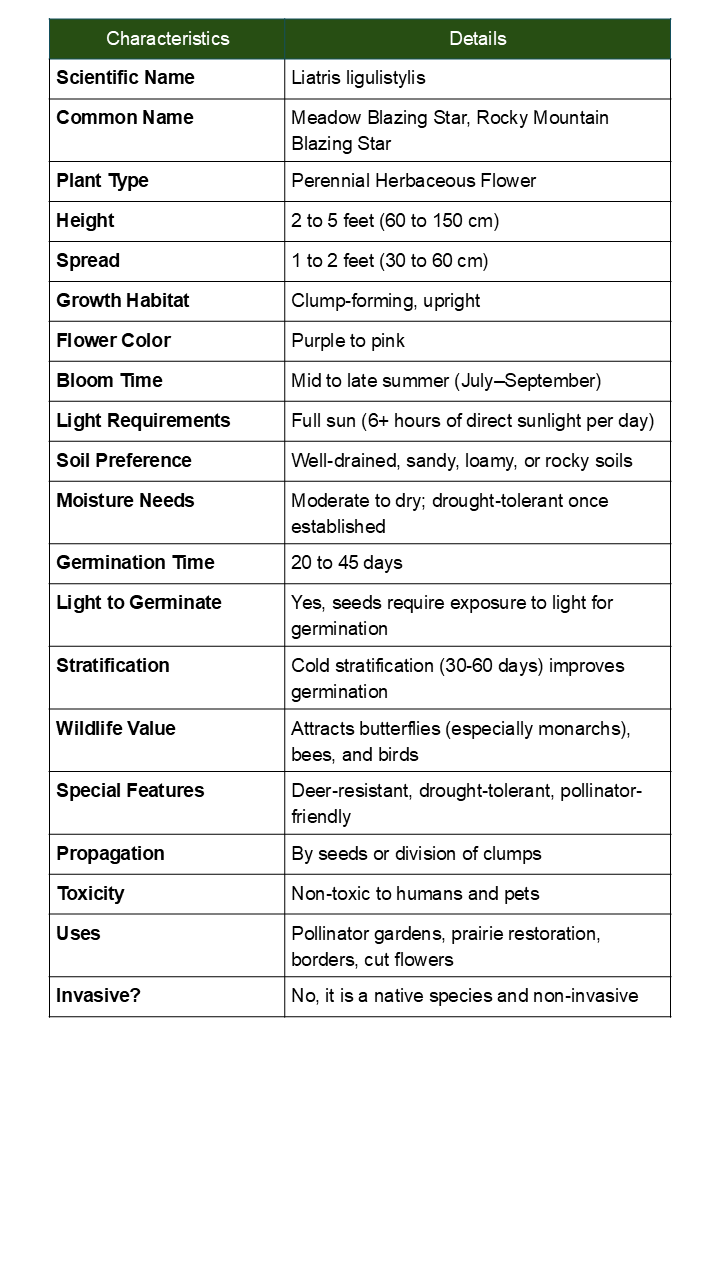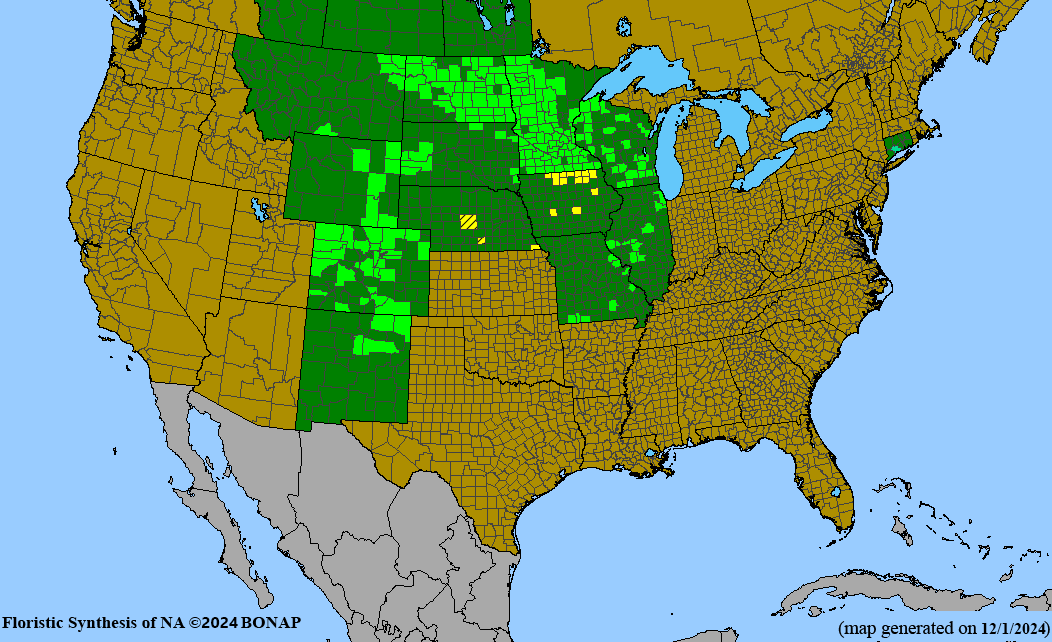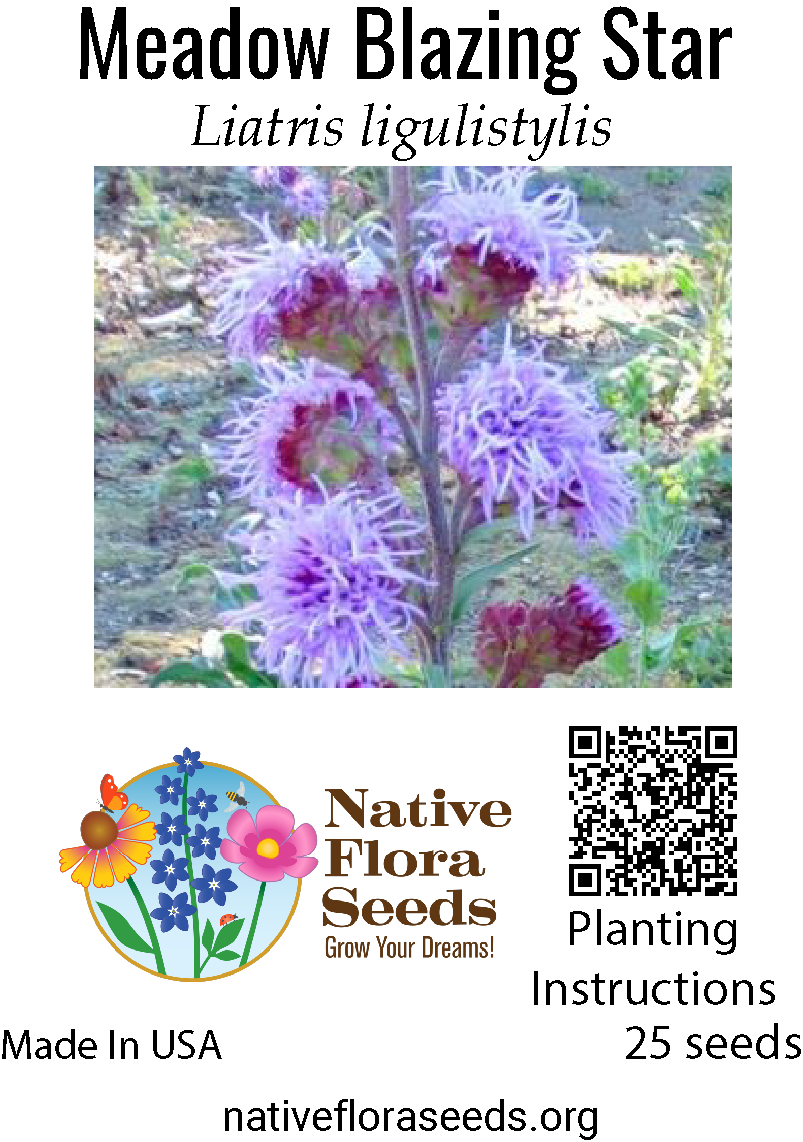Meadow Blazing Star Seeds - Premium Liatris ligulistylis for Prairie Butterfly Gardens
Regular price$4.00
/
Tax included.
No reviews
Description
Spectacular Prairie Beauty - Meadow Blazing Star
Meadow Blazing Star (Liatris ligulistylis) is a magnificent native perennial that creates stunning vertical displays of vibrant purple-pink flower spikes. This prairie jewel is renowned for its exceptional ability to attract butterflies and other pollinators, making it an essential component of any wildlife-friendly garden.
🦋 Key Benefits:
- Butterfly Magnet: Attracts dozens of butterfly species, especially Monarchs and Swallowtails
- Impressive Height: Grows 3-5 feet tall, creating dramatic vertical interest
- Long Bloom Period: Flowers from mid-summer through fall
- Pollinator Paradise: Attracts bees, butterflies, and beneficial insects
- Drought Tolerant: Deep taproot provides excellent drought resistance
- Cut Flower Excellence: Long-lasting blooms perfect for arrangements
🌱 Plant Characteristics:
- Height: 3-5 feet tall, 1-2 feet wide
- Bloom Time: Mid-summer through fall
- Flowers: Dense spikes of vibrant purple-pink blooms that open from top to bottom
- Foliage: Narrow, grass-like leaves arranged alternately on stems
- Light: Full sun (essential for best performance)
- Soil: Well-draining prairie soils, tolerates poor conditions
- Zones: 3-8
🎯 Perfect For:
- Butterfly and pollinator gardens
- Prairie restoration and native plant landscapes
- Cut flower and cottage gardens
- Mass plantings for dramatic impact
- Naturalized meadows and grasslands
- Wildlife habitat creation
Growing Tips: Direct sow in fall or early spring. Seeds benefit from cold stratification. Plants develop deep taproots and may take 2 years to reach full size but are very long-lived once established.
Each packet contains fresh, viable seeds with detailed growing instructions. Sustainably sourced from native Great Plains populations.



